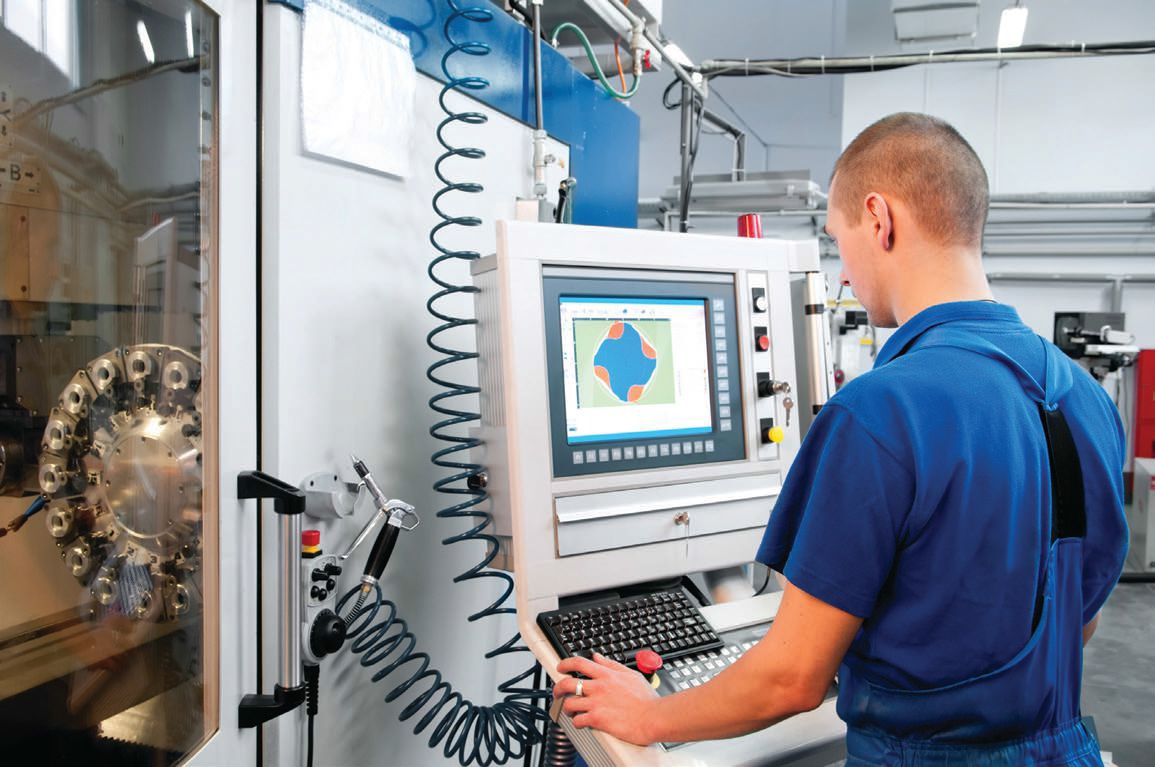20 Minutes With Phil Miller
Karl M. Phipps, Managing Editor | TLT 20 Minutes December 2012
Lubrizol’s global compliance manager for metalworking additives discusses EPA’s new registration-approval process for lubricant manufacturers who market biocides globally.
PHIL MILLER - The Quick File
Phil Miller is the global compliance manager-metalworking additives for The Lubrizol Corp. in Spartanburg, S.C., where he has worked since 1997. His primary responsibilities involve regulatory compliance for all metalworking products and, most recently, biocide registration in the U.S. Previously, he served as vice president of technical services and minority owner for the Gateway Additive Co. (1992-97), which was later acquired by Lubrizol.
Phil began his 22-year at Olin Corp. as an analytical chemist and later in Olin’s R&D department as a technical services representative, focusing on polyalkylene glycol (PAG) applications in metalworking, fire-resistant hydraulics and other industrial uses. While at Gateway Additive, he also was involved in the acquisition of Olin’s PAG business, responsible for developing product literature, material-safety data sheets, regulatory compliance, advertising, technical service and sales.
Phil joined STLE in 1981 and has been an active volunteer and contributor to the society, both at the national and local levels. He served as STLE’s 2001-2002 president and was named a Fellow in 2003.
EDUCATION
Bachelor’s of Science, Marketing & Chemistry – Fairfield University, Fairfield, Conn., 1970
INDUSTRY AFFILIATIONS AND PROFESSIONAL ACHIEVEMENTS
• STLE Connecticut and Carolinas Sections, chairman
• American Chemical Council, Biocides Panel member
• ASTM, Metal Removal Fluids Subcommittee, chairman
• ILMA, Technology Committee Chairman & SHERA Committee member
• Holds 11 U.S. and five foreign patents and has presented several technical presentations at STLE annual conferences.
Fun Fact: Prior to joining Olin, Phil also worked summers at Columbia University’s Lamont Geological Observatory, which served as a primary site preparing methods for characterizing the composition and radiometric dating of the moon rocks. Coincidentally, Phil’s boss, Dr. Paul Gast, was the chief geologist for NASA and selected the first lunar landing site.

Phil Miller
TLT: Can you describe the EPA Reregistration process?
Miller: Under the reregistration process, the U.S. EPA has reviewed older pesticides (those initially registered before November 1984) under the Federal Insecticide, Fungicide and Rodenticide Act (FIFRA) to ensure that they meet current scientific and regulatory standards. This process considered the human health and ecological effects of pesticides and resulted in actions to reduce risks that are of concern. At the end of this review process, EPA issues a Reregistration Eligibility Document (RED) that outlines its final risk assessment and decisions regarding the use of the pesticide in a manner that will not cause unreasonable adverse effects to man or the environment. Registrants are then required to update their product labels based on the RED.
At this time, the reregistration process is ending, however, implementation of the decisions continues beyond the issuance of the REDs.
TLT: What is the EPA Registration Review process?
Miller: In 2006 EPA initiated a new program called Registration Review that re-evaluates all pesticides on a regular cycle. The program’s goal is to review each pesticide active ingredient every 15 years to make certain that as the ability to assess risks to human health and the environment evolves, and as policies and practices change, all pesticide products in the marketplace can still be used safely. EPA must complete the first 15-year cycle of registration review by Oct. 1, 2022. To meet this requirement, EPA is opening 70 or more dockets annually through 2017 so that almost all pesticides registered at the start of the program will have dockets opened by 2017.
To initiate the Registration Review process, EPA opens a public docket that includes a preliminary work plan. This work plan explains what the EPA knows about the pesticide and its thought process for determining the anticipated data and assessment needs. Registrants and the public can comment on this information. As of April 2012, over 300 cases (EPA can aggregate similar active ingredients into a case) have been opened. The Registration Review schedule can be found
here.
After considering public comments, EPA issues a final work plan for each case that responds to the comments, explaining the EPA’s risk assessment and data needs and presents an expected timeline for the registration review. As of April 2012, more than 200 cases are past the final work plan stage. When the EPA determines that additional information is needed to complete the risk assessment, a Data Call-In (DCI) is sent to all relevant registrants. Under a DCI notice, EPA can request active ingredient and/ or product-specific safety and performance data. All relevant registrants must respond to the DCI by the required deadline or EPA can issue a Notice of Intent to Suspend.
After all DCI data are collected and reviewed, EPA will determine whether the pesticide meets or does not meet the standard for registration. EPA’s final decision is outlined in the Final Decision Document. As of April 2012, 30 Registration Review final decisions have been issued.
 Recent NIOSH publications have shown a steady decrease in inhalation exposure over the last 30 years, likely due to the growing use of closed and semi-enclosed machines.
TLT: What are the potential financial obligations to comply with the Registration Review process?
Recent NIOSH publications have shown a steady decrease in inhalation exposure over the last 30 years, likely due to the growing use of closed and semi-enclosed machines.
TLT: What are the potential financial obligations to comply with the Registration Review process?
Miller: This will be highly dependent on the additional data EPA may request. It can range from very little to $5 million, if EPA requires a full cancer study.
TLT: Are biocides registered for use in MWFs affected by the Registration Review process?
Miller: All antimicrobial agents, regardless of their end use, must go through this process. EPA considers metalworking to be a high-exposure scenario, which results in a higher level of scrutiny for active ingredients used in MWFs. The American Chemistry Council’s Antimicrobial Exposure Task Force (AEATF II) has exposure studies planned. Recent NIOSH publications have shown a steady decrease in inhalation exposure over the last 30 years, likely due to the growing use of closed and semi-enclosed machines. It appears that EPA will be using aerosol mist values of 0.5 or 0.8 mg/m3 rather than the current 5 mg/m3 to do their risk assessments. This will likely enable a more favorable risk assessment and more products to remain on the market with metalworking use registration.
TLT: What should biocide users ask their suppliers regarding the impact of the EPA Registration Review process?
Miller: I think it is important to find out the Registration Review timeline for the antimicrobials they are currently using or evaluating for future use. The safest approach may be using newly registered or reregistered products.
TLT: Do agencies that regulate biocides in other countries have a similar process to the U.S. EPA RED Registration Review?
Miller: Yes. For example, to ensure the safety of Canadians, Health Canada launched the Pest Management Regulatory Agency (PMRA) Reevaluation Program in 2001 to examine 401 active ingredients registered before 1995. This review program will ensure older pesticides that no longer meet modern standards are removed from the Canadian market and the use instructions on product labels are updated to best protect users, bystanders and the environment. Under current legislation, all products will be reevaluated on a 15- year cycle.
 After all DCI data are collected and reviewed, EPA will determine whether the pesticide meets or does not meet the standard for registration.
TLT: What’s next on the horizon?
After all DCI data are collected and reviewed, EPA will determine whether the pesticide meets or does not meet the standard for registration.
TLT: What’s next on the horizon?
Miller: EPA announced a list of chemicals to be screened for their potential effects on the endocrine system. EPA will use a two-tiered screening and testing process. Through Tier 1, EPA hopes to identify chemicals that have the potential to interact with the endocrine system. Through Tier 2, EPA will determine the endocrine-related effects caused by each chemical and obtain information about effects at various doses. More detailed information is available at
http://www.epa.gov/endo/. Also look for evolving programs for nanomaterials, too.
You can reach Phil Miller at phil.miller@lubrizol.com.